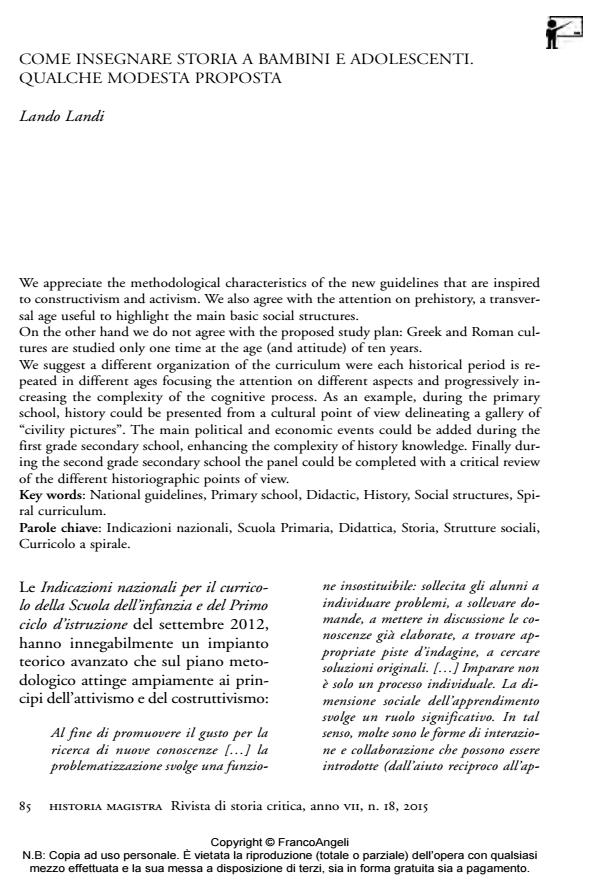Come insegnare storia a bambini e adolescenti. Qualche modesta proposta
Journal title HISTORIA MAGISTRA
Author/s Lando Landi
Publishing Year 2015 Issue 2015/18
Language Italian Pages 8 P. 85-92 File size 90 KB
DOI 10.3280/HM2015-018007
DOI is like a bar code for intellectual property: to have more infomation
click here
Below, you can see the article first page
If you want to buy this article in PDF format, you can do it, following the instructions to buy download credits

FrancoAngeli is member of Publishers International Linking Association, Inc (PILA), a not-for-profit association which run the CrossRef service enabling links to and from online scholarly content.
We appreciate the methodological characteristics of the new guidelines that are inspired to constructivism and activism. We also agree with the attention on prehistory, a transversal age useful to highlight the main basic social structures. On the other hand we do not agree with the proposed study plan: Greek and Roman cultures are studied only one time at the age (and attitude) of ten years. We suggest a different organization of the curriculum were each historical period is repeated in different ages focusing the attention on different aspects and progressively increasing the complexity of the cognitive process. As an example, during the primary school, history could be presented from a cultural point of view delineating a gallery of "civility pictures". The main political and economic events could be added during the first grade secondary school, enhancing the complexity of history knowledge. Finally during the second grade secondary school the panel could be completed with a critical review of the different historiographic points of view. .
Keywords: National guidelines, Primary school, Didactic, History, Social structures, Spiral curriculum
Lando Landi, Come insegnare storia a bambini e adolescenti. Qualche modesta proposta in "HISTORIA MAGISTRA" 18/2015, pp 85-92, DOI: 10.3280/HM2015-018007